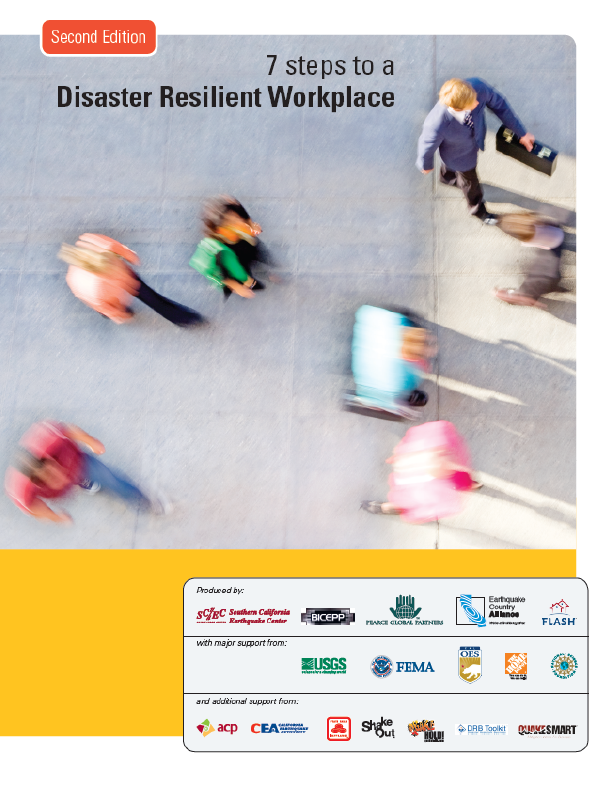Deregulating the Individual Market and the Impact on Mental Health Coverage
Each step in this booklet will provide you with a chance to identify areas in your business that need strengthening, training opportunities, and actions to be taken. They are designed so that every step builds from the last. Customize each step to suit your business type and needs.
While this booklet assists addressing all hazards, we use an earthquake as our primary example. To get you started, here is a snapshot of the 7 Steps.
Setting The Foundation
Identify potential hazards
Which hazards pose risks to your organization, and how? In this step, you will identify what may interrupt your operations temporarily or worse. The priorities you set here will help you in the other Steps.
Before…
STEP 1 Secure Your Space (page 8) Look at the priorities you just identified, where your organization is vulnerable to interruption, and now choose how to minimize these risks. As an example, earthquake shaking can move almost anything, even large or heavy items. Imagine your workplace being picked up and shaken sideways – what would be thrown around? Learn how to secure these items to prevent damage or injuries to employees.
STEP 2 Plan To Be Safe (page 9) After you have identified the potential hazards and impacts to your business, it’s time to create your plan and train employees! Because disasters are highly unpredictable, it is impossible to anticipate every situation and impact. However, a Business Continuity Plan can greatly reduce the risks and losses your organization might face by guiding your decisions yet allowing flexibility to adapt to the unexpected.
STEP 3 Organize disaster supplies (page 10) After a disaster, organizations will need to be self-sufficient as first responders will be addressing high priorities such as hospitals and schools. Determine what you need in the first days following an earthquake including the basics like food, water and sanitation.
STEP 4 Minimize Financial Hardships (page 11) Organize your important documents, strengthen your property, and consider insurance—customized to cover your most needed items. Most businesses lease their space, so it’s essential to work with your owner and property manager on addressing structural issues. If you own it, strengthen those weaknesses. Either way, measures taken now can help you keep your doors open. No access, no business.
DURING… STEP 5 Drop, Cover, and Hold On (page 12) The ground is shaking, what do you do? Everyone should know how to protect themselves in any situation. Most often this will be to Drop, Cover, and Hold On, but this can depend on your location. Stay clear of any objects that may fall and stay put until the shaking stops.
STEP 6 Improve Safety (page 13) Life safety is the top priority after an earthquake or any disaster. Activate your own trained personnel to find and help anyone injured, as outside help may not be coming. Next, survey your building for damage or other hazards to prevent further injuries or damage. Decide if safe to stay.
AND AFTER… STEP 7 Reconnect and Restore (page 14) Once life safety is being addressed, it’s time to begin recovery activities to resume operations. Conduct an assessment for operational issues then repair damage. Use your plan to guide your actions and restore priority operations first. Communicate often with employees and key contacts. Document your lessons learned to determine priorities before the next event.











